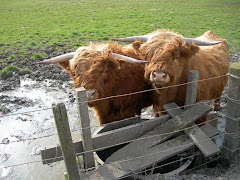One of my favorite things to do is fishing for Salmon in the rivers. Standing within 40 feet of a groups of 10 to 20 pound fish that are in one foot of water of less is a beautiful thing. For anyone who hasn't experienced it for them self, I'm always inspired by it. Many people say these fish don't bite once they get into the rivers. There is some truth to that. They aren't as aggressive as when they are suspended out in the great lakes. They don't feed as often but they do feed. They will also strike for other reasons. The will strike out of aggression, dominance, frustration and to protect their young.
There are three things to consider that will help in getting river run fish to hit. The first thing is try not to spook the fish. The second thing is how you present your bait . The third is the size of your lure or bait. Being prepared with small less conspicuous baits and larger flashy baits is always best.
Visually these fish are very sharp. If you can see them they can see you. These fish are typically spooky and for good reason . Most of these fish have seen and had to deal with people several times before they have had the opportunity to start spawning. The odds are they have tried to start their spawning process more than once and have been scared off by over eager fisherman before they ended up in front of you.
The fish quickly learn to associate people as a threat. When determining how close to get you need to keep in mind that It's import to have good control over where your casts land in the water. You don't want to be casting so hard to get your bait to the fish that you have to cast three times to get one in the zone. The odds are that if you can't control you casts a few of your casts will land on or near the fish. It doesn't take many times where your sinkers or lure lands to close to the fish and they become spooked. The end result is they move on or won't stay in one place long enough to concentrate on them.. What your wearing can make a difference on how close you can get to the fish. Try to dress in neutral or dark colors that don't completely contrast with the background of the river bank. If you can stay close to the bank or structure on the bank.
Presenting your baits is as important as anything. The main thing is what ever your fishing with, you don't want it to enter the water near the fish. There are several presentations to key in on that can help with this. One is using bobbers with spawn. This is an effective technique when fish are in holes or deeper runs. This works well for several reasons. Your hook is up off the bottom which in the rivers usually has rocks, leaves or wood tight to bottom. If your fishing on bottom all that stuff can interfere with your presentation as it drifts through the fish. Let alone it can be very frustrating if you getting snagged and losing hooks and having to tie on new hardware several times at every stop.
You don't need to be at the same depth as the fish. If anything you can be 12 inches to 24 inches above them and still be in the strike zone. With this presentation it's a good idea to use a barrel swivel below your bobber. Tie on to that using about a two foot leader. If your main line is 10 pound test use a leader of 8 pound. If your Main line is 8 pound use a 6 pound leader. If you do get caught on structure you can usually limit your loss to a hook and some leader line. Keep in mind you want to cast above the whole keeping the entry of your bait well away from the fish. Now set the length between your hook and your bobber about 2 feet longer than the hole is deep. Start off by using less weight than what you think you need. You don't want your bait to sink straight down. Ideally what you want is by the time your bait has drifter down to the hole where the fish are your bait has worked it's way down toward the bottom. Because your bait is sinking as it's drifting with the current your line will be at an angle. Furthest down stream is your bait.
This will be what the fish will see first which is exactly what you want. If your not quite sure if your down to where the fish are and decide to add weight let your bobber tell you when you have added enough. If you bobber begins to hesitate as it's drifting you catching bottom and that's not what you want. This presentation usually works best with a 2 inch ball of Skein Spawn. The large ball of skein well above the fish is a large target the fish will key on. The easiest way I've found to keep the skein on is to use a snelled hook. Slip the knot down the hook about ¼ inch and pinch the knot to the hook to keep it from moving. With your other hand push your leader line from in front of the eye of the hook back through the eye. This will make a loop behind the eye of the hook. Push it until you have a large loop. Slip the skein inside the loop so it's centered and pull until the skein is attached. To finish it off I usually make sure the point of my hook is turned into the skein so it's not showing.
While fishing for fish on beds I usually use a 7or 8 weight fly rod with a sinking tip or a spinning rod with split shot and a small wet fly. I find the sink tip with a small minnow imitator 18 inches behind a #12 single egg pattern is very effective. I usually try to target the fish that are hanging near the back of the bed first. What your trying to do is get your sinking line to pull the fly through the fish in a down stream direction. This represents a minnow chasing a single egg as it drifts down stream. This triggers the fish to feed for two reasons. The first reason is they don't like fish feeding on the eggs. The second reason is male dominance. There is a natural pecking order established in every group of fish especially when they are on beds. The smaller fish always get picked on and pushed around by a bigger fish in the area.
Sometimes it takes fishing flies up to six inches long to trigger this response. When the fly lands you want it upstream and on the opposite side of the as you are. The sinking tip should land down stream from the fish. You want the current to pull your sinking tip which will drag your fly though the fish. You want this to happen without the sinking tip going through the fish if at all possible. It takes some practice. By the time you get the placement of your cast correct you may have spooked some fish. This is another reason I target the fish toward the back first. If some of the fish do get spooked with little adjustment you can cast a little further upstream and fish the front of the beds. Your now targeting fish that haven't been startled by your previous casts.
When fishing with a spinning rod and flies it's a bit easier. I tie a barrel swivel on with a 5 to 6 foot leader to a fly or a spawn sack. When I tie on the barrel swivel I leave a tag end of about 4 inches. I use the tag end for split shot. If your split shot gets hung up in the rocks you can do a quick snap and the split shot will slide off. For someone who is buying their flies this can save them allot of money. Another advantage is It's easier to put on a split shot than a whole new leader, especially when it's cold outside. When deciding where you need to be when casting you should stand up stream from the fish. Cast well past the fish and up stream. This keeps the noise from the bait entering the water away from the fish.
As soon as it hits the water start reeling your line in. As your reeling in, your line will fade back toward the fish because of the current .You want to reel it in so your sinker ends up about 10 feet upstream from the fish. By this time your bait is down stream form your sinkers. This is where the long leader comes in. At this point allow your bait to drift down and through the fish. The fish see your bait well before they see your sinkers. I try to use either small eggs of neutral colored flies when trying to get the fish to feed out of hunger. I will spend a good amount of time on a group of fish before giving up. I believe by drifting baits that aren't bold or flashy a person is less likely to spook the fish. If you can keep the fish together in one location some of the fish will bite.
http://www.michiganfishguide.com
Article Source: http://EzineArticles.com/?expert=Ernest_Miller
Subscribe to:
Post Comments (Atom)









No comments:
Post a Comment